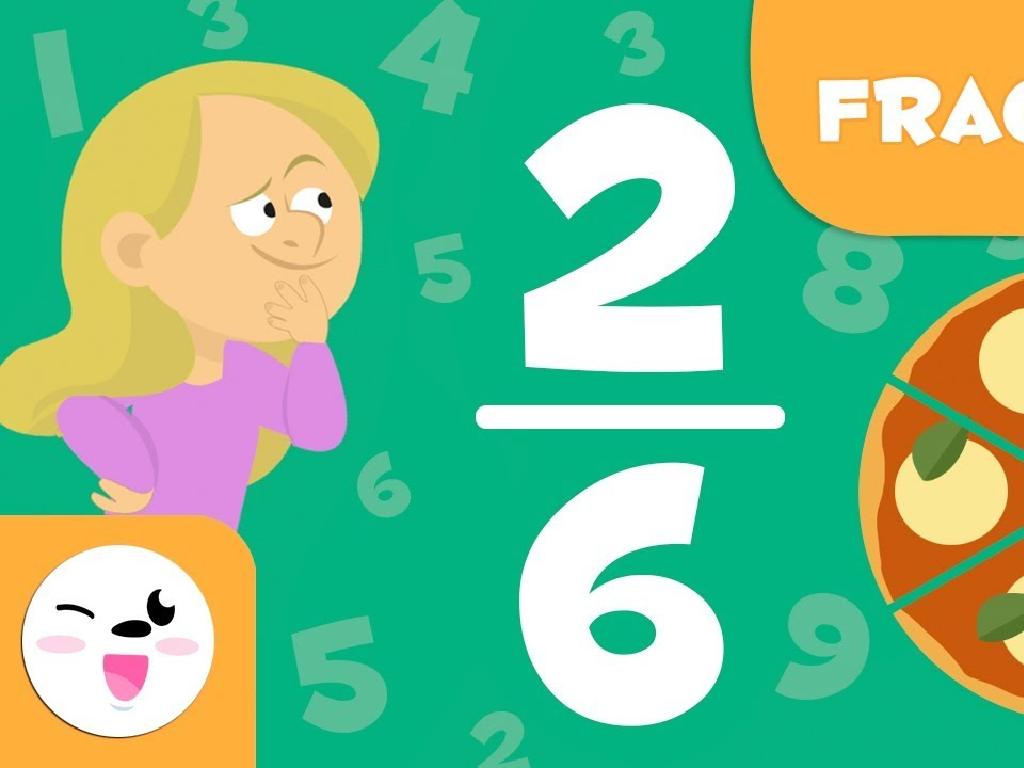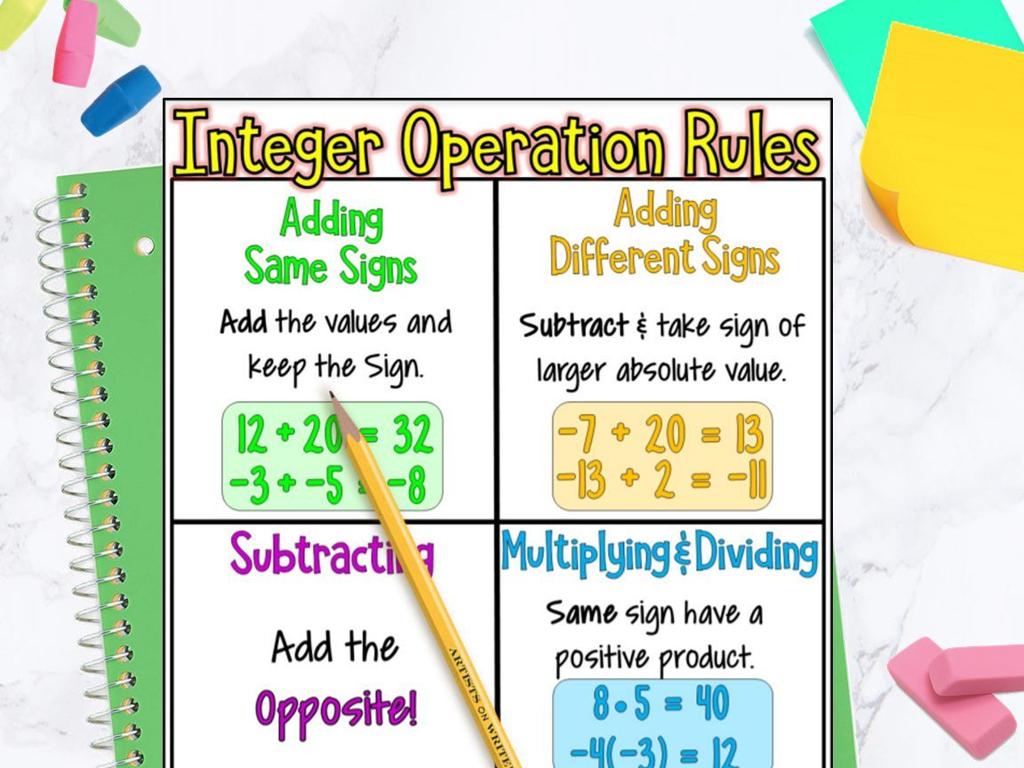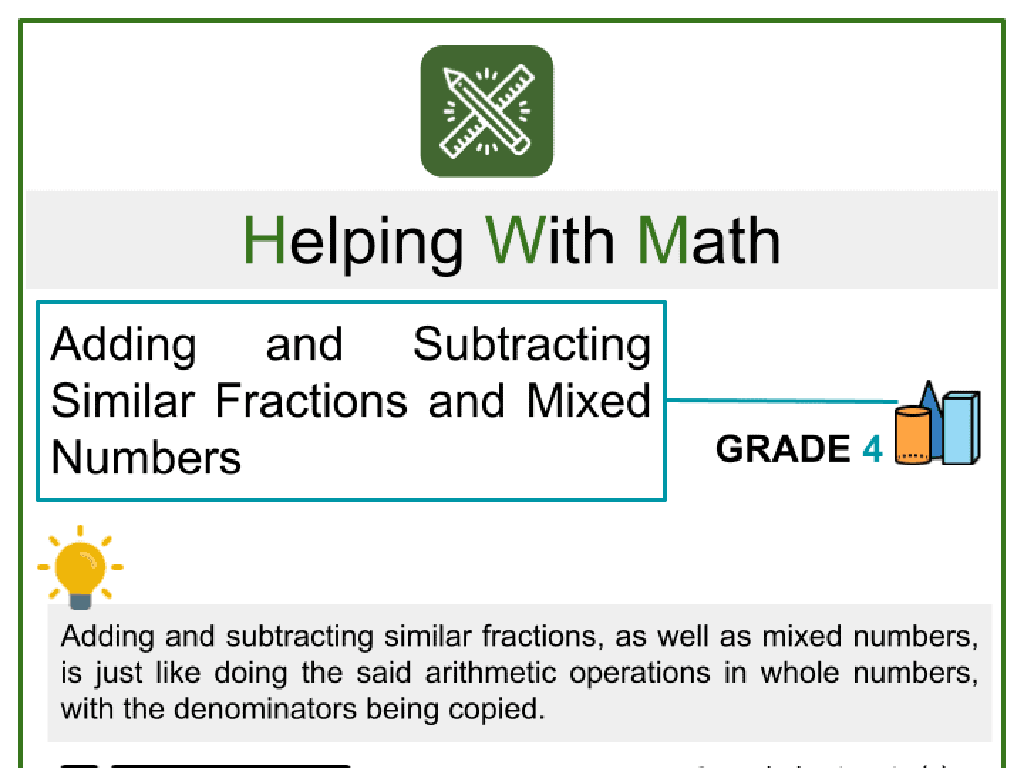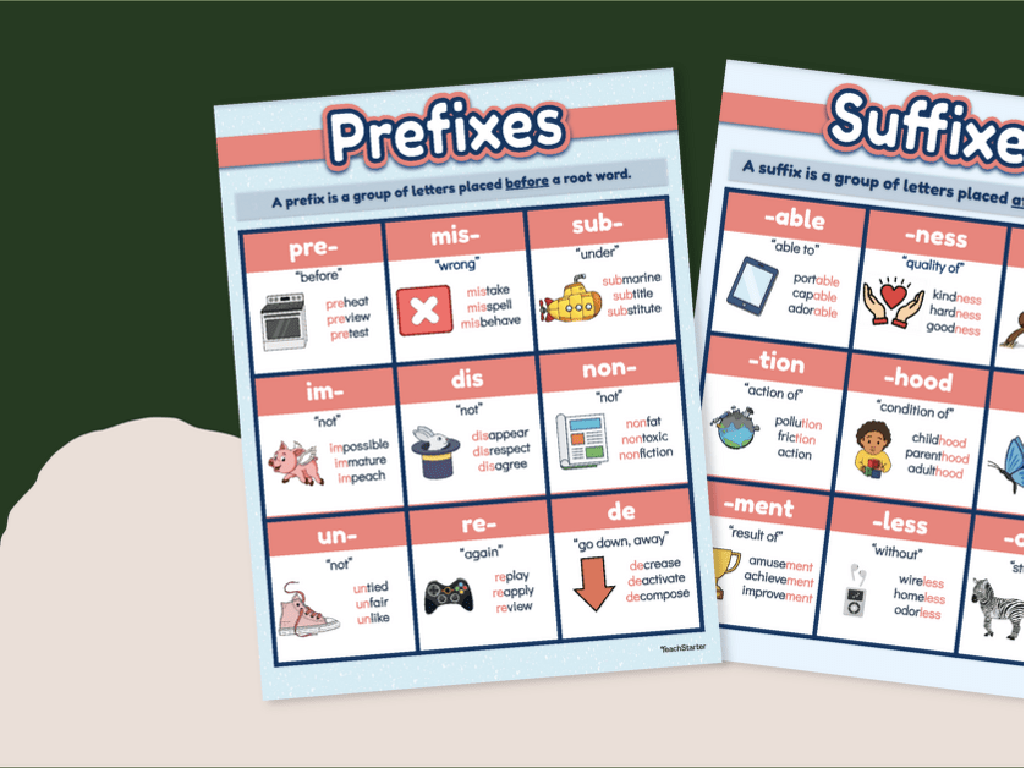Ways To Make A Number Using Addition
Subject: Math
Grade: Second grade
Topic: Addition: Two Digits
Summary: This engaging second-grade math presentation teaches students how to create numbers using different addition pairs. Through interactive activities and relatable examples, students discover multiple ways to add two-digit numbers, such as finding combinations for 8, 9, and 10. The lesson reinforces mental math skills, number sense, and collaborative problem solving, making addition fun and accessible while building a strong foundation in essential math concepts.
Please LOG IN to download the presentation. Access is available to registered users only.
View More Content
Exploring Numbers with Addition
– Learn to make numbers using addition
– Addition creates the same number differently
– Use addition pairs to form a number
– If we have the number 10, addition pairs like 5+5, 6+4, and 7+3 all equal 10
– Practice with examples
– Example: Find different ways to add up to 12
|
This slide introduces the concept of creating numbers using addition, which is a fundamental skill in second-grade mathematics. The objective is to help students understand that there are multiple addition pairs that can result in the same number. Start by explaining that addition is simply combining two or more numbers to make a new number. Then, demonstrate with tangible examples, such as using blocks or counters, to show how different pairs of numbers can add up to the same total. Encourage students to think of as many pairs as possible for a given number and to share their findings with the class. This activity will enhance their mental math skills and understanding of the relationship between numbers.
Exploring Addition: Ways to Make a Number
– What is addition?
– Addition is combining numbers to find a total sum.
– Adding numbers together
– Like adding apples in a basket
– Imagine you have 2 apples and you get 3 more, now you have 5!
– Counting the total number
– If you have 4 oranges and add 1 more, how many do you have?
|
This slide introduces the concept of addition as a way to combine two or more numbers to find their total. Use relatable examples like adding apples to a basket to make the concept tangible for second graders. Encourage students to visualize the process of adding items they are familiar with, such as fruits, to help them understand the abstract concept of addition. Ask them to imagine scenarios where they have a certain number of items and then get more, prompting them to count the new total. This will help them grasp the basic idea of addition as a means to find out ‘how many in all’.
Ways to Make a Number Using Addition
– Many ways to add to the same number
– Example: Making 10 with addition
– Like 5 + 5, 6 + 4, or 8 + 2 to make 10
– Try different number combinations
– What two numbers add up to 10?
– Practice with your favorite numbers
– Pick any number and find pairs that add up
|
This slide introduces the concept that a single number can be made by adding together different pairs of numbers. Use the number 10 as a clear example to show various combinations that result in 10 when added together. Encourage students to explore and find different pairs of numbers that add up to 10 or any other target number they choose. This activity helps to reinforce the concept of addition and the idea that there are multiple solutions to a problem. It also allows students to practice their addition skills with numbers that are familiar and fun for them. In the next class, have students share their unique combinations and explain how they found them.
Let’s Practice Together: Making Numbers with Addition
– I’ll show you a number on the board
– Think of different ways to add up to it
– Use smaller numbers that add up to the big number
– Remember, many answers are correct
– We’ll discuss our answers together
– Share your answers and learn from friends
|
This interactive class activity is designed to help second-grade students understand that there are multiple ways to reach the same sum using addition. Start by writing a two-digit number on the board. Encourage the students to think creatively and come up with various combinations of numbers that add up to the displayed number. Remind them that there are numerous correct answers and that this exercise is about exploring the flexibility of addition. After giving them time to work on this, facilitate a discussion where students can share their different answers and explain their thought process. This will not only reinforce their addition skills but also promote their understanding of number sense and the concept of equivalency.
Making Number 8 with Addition
– Explore ways to make 8
– Add two numbers for 8
– Examples: 3 + 5, 2 + 6
– More examples: 1 + 7, 0 + 8
– Think of other combinations
– Use objects like blocks to visualize
|
This slide is aimed at helping second-grade students understand that there are multiple combinations of numbers that can be added together to make the number 8. Start by discussing the concept of addition as putting together and increasing. Show them the given examples and then encourage the students to use objects like blocks or counters to find new combinations. This hands-on activity will help solidify their understanding of addition and number sense. As an extension, ask students to write down or draw their findings, which will also incorporate writing and representation skills into the math lesson.
Your Turn: Making the Number 7
– Find combinations to make 7
– Work with a partner
– Write down each combination
Examples: 3+4, 2+5, 6+1
– Share your combinations
|
This slide is an interactive class activity designed to encourage students to explore addition with two-digit numbers. Students are asked to work in pairs to find as many combinations of numbers that add up to 7. This exercise helps to develop their understanding of addition and number sense. Teachers should circulate the room to assist pairs as needed, encourage creative thinking, and ensure that students understand that there are multiple ways to reach the same sum. After the activity, facilitate a discussion where students can share their findings and reflect on the different possible combinations. This will also help them to recognize patterns and improve their mental math skills.
Class Activity: Number Making Race
– Find ways to make the number 9
– Work in groups for 5 minutes
– List all the different combinations
– Example: 4+5, 6+3, 2+7
– Ready, set, go!
|
This activity is designed to encourage collaboration and quick thinking as students work together to find as many addition combinations as possible that equal 9. Before starting, explain that there are multiple ways to reach the same total in addition. During the activity, circulate the room to ensure all students are participating and encourage them to think of different combinations. After the 5 minutes, have each group share their findings and discuss any unique combinations. Possible variations of the activity for different groups could include using manipulatives, drawing visual representations, or challenging students to find combinations using more than two addends.
Review and Share: Making Numbers with Addition
– Review our addition discoveries
– Each group shares a favorite combo
– Maybe you liked 10 + 5 to make 15?
– Discuss why those combos are special
– Did one way seem easier or more fun?
– Celebrate our addition skills!
|
This slide is meant to wrap up the lesson on creating numbers through addition. It’s a chance for students to reflect on what they’ve learned and to practice their presentation skills. Each group should pick their favorite number combination that they’ve discovered and be prepared to explain why they liked it. Was it easier to remember? Did it help them understand addition better? This discussion will help reinforce their understanding of addition and give them an opportunity to learn from each other. As a teacher, be ready to facilitate the discussion, provide encouragement, and highlight the importance of different strategies in solving math problems.
Great Work on Addition!
– Congratulations on your hard work
– Many ways to create a number
– Like 10 can be 5+5 or 6+4
– Practice makes perfect
– You’re becoming addition experts
|
This slide is meant to wrap up the lesson on addition by celebrating the students’ efforts and reinforcing the concept that numbers can be composed in various ways using addition. Encourage the students to continue practicing with different number combinations to strengthen their understanding and skills. Remind them that mastery comes with practice and that they are well on their way to becoming proficient in addition. Offer some suggestions for practice, such as playing addition games or doing simple addition problems during their free time.





